Day 1 Shanghai → Geneva
·morning
According to flight information, tourists are requested to arrive at Shanghai Pudong International Airport 3 hours in advance and take a flight to Geneva, a city in western Switzerland.
Reference flights:
MU217, 01:30 - 07:50, Shanghai Pudong (PVG) - Geneva (GVA), flight time 11 hours 20 minutes, winter time difference 7 hours
The flight slowly descended into Geneva, a lakeside city in western Switzerland. The snow-capped Alps loomed far off on the horizon, and the city quietly awoke in the morning mist.
After being picked up by a special car, we started our light tour to adapt to the situation:
Head to the United Nations European Headquarters (Exterior), a symbolic building of this international city. The "broken-leg chair" in front of the door quietly tells the complex narrative of peace and war.
Then we walked slowly along the lakeside and looked out at the 140-meter-high Jet d'Eau in the center of Lake Geneva. It was like a punctuation mark in the crisp winter air, marking the clear boundaries of the city.
We will make a short stop at the English Garden and stroll to the famous flower clock. The clock face is made up of thousands of seasonal flowers, symbolizing Switzerland's cherishment and awe of "time" and "nature".
·afternoon
We returned to the hotel in the early afternoon to rest and wash up. The rest of the time was left for everyone to rest and sleep in the hotel or explore the city freely.


Day 2 Geneva → Lausanne → Montreux
·morning
After breakfast, we will set off along the northern shore of Lake Geneva and begin our lakeside cultural tour in the French-speaking part of Switzerland.
Arrive in Lausanne, a city renowned for being the headquarters of the International Olympic Committee. Nestled between lakes and mountains, it embodies a sense of both rationality and romance. Visit the Olympic Museum, where you'll learn about the history and spirit behind the centuries-old Olympic Games through visual and interactive exhibits. Alternatively, stroll through the lakeside park, gazing out at the snow-capped Alps in the distance and the lake, still shimmering softly in the winter sun.
·afternoon
At noon, we'll travel to Montreux, a spa town nestled between mountains and water, once the inspiration for Lord Byron, Charlie Chaplin, and Freddie Mercury. We'll then visit Chillon Castle on the shores of Lake Geneva. The castle sits on a rocky outcrop in the lake, and in winter, its reflections on the lake and the snow-capped mountains create a tranquil medieval painting.
In the evening, you can take a walk along the lakeside and feel the unique literary and artistic atmosphere of this small town and the leisurely pace under the warm winter sun.


Day 3 Montreux → Fiesch/Aletsch Glacier → Visp
All day
Departing early in the morning, we drove into the southern Swiss canton of Valais, crossing layers of snow-capped mountains to the Alpine town of Fiesch, nestled high in the mountains. This gateway to the Aletsch Glacier is a quiet spot rarely visited by tourists. Streets are blanketed in fresh snow, chimneys curl upward, and sleds and trekking poles are the most common means of transportation. If Zermatt is a dazzling stage for ice and snow, Fiesch is more like the intimate daily life of mountain dwellers.
At Fiesch, we transferred to a cable car and ascended gradually to the Eiger Observation Deck, nearly 2,900 meters above sea level. As the cable car soared through the clouds, the ground receded, and the sky and earth gradually brightened. In the distance, the Aletsch Glacier stretched across the valley—Europe's longest glacier, its winding curves and distinct ice patterns gleamed a cool blue in the winter sun, its grandeur radiating a pristine tranquility.
After reaching the summit, you can choose to stay at the observation deck and overlook how this 20-kilometer glacier carves out the folds of the mountain step by step; you can also walk in the edge area where the snow is still shallow, listen to the wind blowing across the ice field, hear the slight sound of your footsteps on the snow, and feel the magnificent brushstrokes left by nature here.
We left the mountains in the afternoon, drove down the mountain, and stayed in a small town in the valley.
Day 4 Visp → Tesch → Zermatt/Matterhorn → Leukerbad
·morning
After breakfast, depart from Visp and take a bus to the "gateway to the mountains" [Taesch]. Here, transfer to a dedicated mountain train and slowly drive to the legendary town on the top of the mountain - [Zermatt].
The train churned along the snowy slopes, and outside the window was a white poem of winter's Alps. Arriving in Zermatt, the pristine, car-free town, the snow-capped wooden houses interwoven with the cable cars, created a scene. As we walked along the street, a peak loomed in the distance—the Matterhorn, known as the "Pyramid of the Alps." Its sharp, solitary silhouette, appearing and disappearing between sunlight and cloud shadows, seemed like a divine watchman.
Weather permitting, we will take the cogwheel train to the Gornergrat Observation Deck, where you can admire the magnificent Alpine scenery, including the Matterhorn and Mount Rosa, 38 peaks over 4,000 meters above sea level, and the Gorner Glacier, the second largest glacier in the Alps.
·afternoon
After descending the mountain, you'll have free time in Zermatt. In winter, Zermatt feels as if time has stood still. Skis lean against doorways, and the aroma of coffee wafts through wooden windows. Shop windows display Swiss knives, cheeses, watches, and wool fabrics, creating a fairytale-like reality.
After bidding farewell to our snowy mountain adventure, we boarded a bus to Leukerbad, where we embarked on our second journey through the hot springs amidst the rolling snow-capped mountains. Upon arrival, we could head to the hotel's hot springs, where we could immerse ourselves in the lingering aroma of ice and snow, and, enveloped in the mist, experience a gentle descent of both body and senses.


Day 5 Leukerbad → Annecy → Lyon
·morning
We'll depart the Alps this morning and descend along the mountain road, crossing the Swiss-French border and entering eastern France. By noon, we'll arrive in Annecy, a lakeside city known as the "Balcony of the Alps."
The lake is like a mirror, with snow-capped mountains reflected in it. White swans glide across the water, and the old town behind it presents a different picture: cobblestone streets, flowing water, colorful wooden houses and arched corridors. Annecy is often called the "Venice of France", but its beauty lies not in its prosperity and bustle, but in every stained glass window and every whispering river.
Stroll through the cobblestone alleys of the old town and visit the Palais de l'Isle, a 12th-century prison on an island nestled in the heart of the Thiou Canal. Today, it's a cultural landmark of Annecy. Then, ascend to a vantage point overlooking the town and visit the Château d'Annecy (inside) to learn about the millennia-long history of the Duchy of Savoy and this lake city.
·afternoon
After a free lunch, we will drive to Lyon. Lyon is located at the confluence of two rivers. It has been a major commercial center and cultural hub since ancient times and is known as the "source of French art de vivre."
We'll depart from Lyon Cathedral and walk to the cable car station, where we'll ascend to Fourvière Hill. Atop the hill, Notre-Dame de Fourvière stands majestically, a symbol of Lyon's spirit. Its golden statue of the Virgin towers over the city. We'll then visit the Gallo-Roman Theatre, an ancient open-air theater left behind by the Romans in the 1st century BC and still used for performances and festivals.


Day 6 Lyon → Arles → Avignon
·morning
Departing Lyon early this morning, we'll journey south along the Rhône Valley, arriving in Arles, the soul of Provence, before noon. In this ancient city, renowned for Van Gogh's work, we'll embark on an artistic journey where reality intertwines with the canvas.
First, visit the Asylum of Saint-Paul, also known as the Van Gogh Sanatorium, where Van Gogh received treatment for his mental illness. His paintings, including "Irises" and "Garden of the Asylum," were created here. Then, walk through the alleyways to the Arles Arena, a well-preserved Roman amphitheater dating back to the first century AD, still used for bullfighting, performances, and other events.
Stroll along the lush greenery of the Public Gardens, the setting for works like "Afternoon on a Garden Bench" and "A Corner of the Park." A short stop at Le Café Van Gogh (now closed) is recommended. This small cafe with a yellow awning served as the inspiration for "Café Terrace at Night," a must-see for pilgrims and art lovers.
·afternoon
After a short lunch break, we'll continue to Avignon, an ancient city once the seat of the Pope in the 14th century. It boasts a rich tapestry of religious and political relics. Encircled by ancient stone walls, stepping inside feels like stepping back into medieval Europe.
We'll visit the Palais des Papes (interior), one of the largest surviving Gothic buildings in Europe, once home to seven popes. Its frescoes, meeting halls, and chapels remain intact, making it a crucial site for studying the structure of religious power. We'll then proceed to Avignon Cathedral, where the towering towers of the cathedral face the Palais, a symbol of the continuity of faith and ritual.
Finally, we climbed up to the Rock Park, which is an excellent vantage point overlooking the entire Avignon and the Rhone Valley. The evening sunlight shines on the river and the broken bridge, bringing a gentle end to today's journey.


Day 7 Avignon → Luberon → Aix
·morning
Depart Avignon early in the morning and drive south into the picturesque Luberon Mountains to explore the essence of Provence mountain life.
Our first stop is Stone Town, a town known as "the town hanging on a cliff." Built from light beige stones, the village nestles against the mountainside. In the morning light, the buildings themselves appear to be gilded by the sun. Strolling along the cobblestone streets, you'll overlook the olive groves and lavender fields that stretch across the valley. You can also explore the village's small shops, where you can savor the aroma of pottery, honey, and vanilla salt.
We'll then head to Lourmarin, an artistic village at the foot of the mountain. This is the final resting place of Albert Camus and a rare "artistic soul corner" in Provence. Enjoy lunch at your leisure in the village, listen to street music, and watch the grapevines droop in front of your window.
·afternoon
In the afternoon, we will drive to Aix, a city with limestone springs, plane tree-lined avenues and exquisite courtyards. It is the cultural symbol of Provence and the hometown of the painter Cézanne.
We will visit the Granet Museum, one of the city's most iconic art museums, home to original canvases by artists like Cézanne, Renoir, and Picasso. The exhibition halls are warm and serene, offering a glimpse into a time of whispering colors and compositions.
In the evening, you can stroll through the old town of Aix and feel the echoes of French daily life in the cafes under the tree-lined boulevard. The orange sunlight falls on the window frames of the stone houses, and the journey gradually enters the stage of transition from natural aesthetics to life aesthetics.


Day 8 Aix → Nice
·morning
After breakfast, we embarked on a city walk through Aix Old Town. Starting at Aix Cathedral, this church, a blend of Romanesque, Gothic, and Baroque elements, is the spiritual starting point of the city. The bells echoing among the stone columns seemed to continue the rhythm of light and shadow on Cézanne's canvas.
Stroll through the narrow alleys of the old town and onto the Cours Mirabeau. Flanked by 18th-century aristocratic mansions and fountain-lined squares, the street is dotted with open-air cafes and daily markets, filling the air with the aroma of fresh fruits and vegetables, soap, and cheese. If it happens to be a market day, stop and pick up a bouquet of dried flowers or a bar of castile soap, leaving behind a memorable taste and touch of your journey.
·afternoon
In the afternoon, we set off for Nice, the pearl of the Cote d'Azur. The Mediterranean sunshine gradually became brighter outside the car window, and the city's color changed from beige to lemon yellow and sea blue.
Upon arrival, head to Castle Hill for a breathtaking sea view, overlooking the Old Port and the graceful curve of the Baie des Anges. As the setting sun shimmers across the rooftops and waves, the vibrant colors of Nice truly reveal themselves.
Then we strolled along the Promenade des Anglais, the most representative walking route in Nice. The 7-kilometer coastline is connected by palm trees and white benches. Couples, runners, musicians, and travelers mingled here, and every step was immersed in the rhythm of the city.


Day 9 Nice → Antibes → Nice
·morning
After breakfast, we will sail along the Cote d'Azur to Antibes, a seaside town where the atmosphere of life and artistic temperament of southern France intertwine most naturally.
Passing by the famous [Angel Bay], one of the largest yacht ports in the Mediterranean, the moored ships are like quiet sculptures in the morning light, the sea is sparkling, and occasionally seabirds fly across the sky.
Upon arrival, enter the Old Town and wander through the cobblestone alleyways and shaded open-air flower markets, exploring the Provence Market, the heart of local life. The aromas of fresh fruits and vegetables, olives, spices, and goat's cheese blend together, instantly immersing you in the flavors of the Mediterranean.
Afterwards, visit the Picasso Museum (inside), housed in a seaside castle, where Picasso briefly worked and created his works. The museum displays a series of works he created in Antibes in 1946, reflecting his response to the light and free brushstrokes of southern France.
·afternoon
Return to the coastline in the afternoon and start a short [coastal light hike] experience.
The route follows the coastal cliffs, with a winding white rock path beneath your feet. On one side, you'll see the azure Mediterranean, while on the other, you'll find wild olive trees and low shrubs. Between the mountains and the sea, your steps become gentle. You can choose to reach a viewing platform and pause to feel the sea breeze through your hair, or continue walking until the sun quietly slips over your shoulders.
Return to Nice in the evening, greeted by the afterglow of the Cote d'Azur and the city lights.
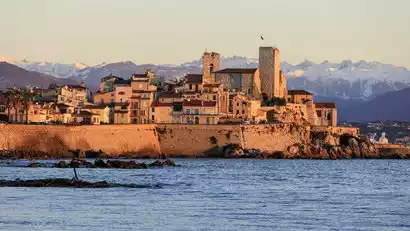
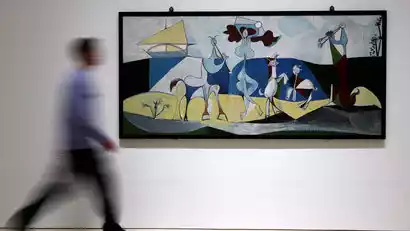
Day 10 Nice → Cannes → Marseille
·morning
After breakfast, we'll drive west along the Mediterranean coastline to Cannes, the capital of film and art. This small city is famous for its international film festival, which also adds a touch of romance and glory to the off-screen world.
We'll begin our exploration of the city's "Murals," a collection of film-themed murals scattered throughout Cannes, telling the stories behind the silver screen. We'll then ascend to the "Cannes Sign," a mountain landmark overlooking the Mediterranean Sea where the port city meets the blue waters.
Walk to the Festival Palace and the Avenue of Stars, and follow the star-shaped handprints and names on the ground to find those familiar screen legends.
·afternoon
In the afternoon, we will continue to Marseille, the second largest port city in France. This Mediterranean gateway city has a strong sense of cultural integration and a thousand-year-old maritime tradition.
Upon arrival, ascend to Marseille's spiritual summit—the Basilica of Notre-Dame de la Garde. This Neo-Byzantine-style structure stands at the city's highest point. Its golden statue, with its raised right hand, overlooks the city and harbor, a place of refuge for fishermen, mothers, and travelers alike. From the summit, you can gaze out over the Old Port of Marseille, the Château d'If, and the distant, undulating coastline. The journey now enters a solemn and expansive rhythm.
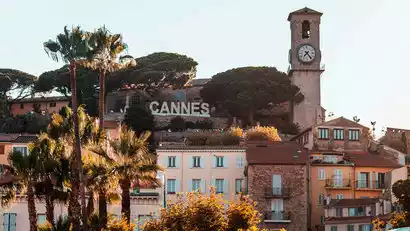
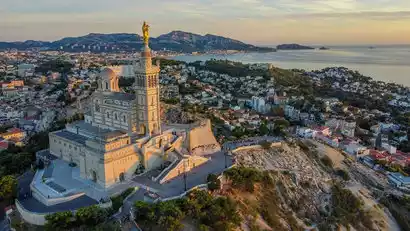
11th Tianma Race → Shanghai
All day
After breakfast, we'll head to Marseille's Old Port and board a boat for the Château d'If, located on a small offshore island. This 16th-century stone fortress became famous thanks to the film "The Count of Monte Cristo." From the island, the sea breeze rustles the bars of the former prison cell, where literature and reality converge on this surging sea.
After returning to the city, embark on a leisurely stroll from the port into Le Pan—Marseille's oldest neighborhood and home to the most vibrant atmosphere. Narrow cobblestone alleyways, graffiti walls, galleries, and handicraft shops interspersed with laundry balconies and cats lazily basking in the sun on street corners create a truly authentic scene of the urban life of the old South of France.
Walk to Marseille Cathedral, which combines Byzantine and Roman styles. The facade has unique black and white stone stripes and the interior is gorgeously decorated. It is one of the symbols of Marseille's religious spirit.
·afternoon
The afternoon is free for you to do some shopping or pack souvenirs near the port area or commercial street. You can buy Mediterranean specialties such as olive soap, vanilla, and Marseille pottery to put a warm end to your journey.
In the evening, we were transferred to Marseille Airport and boarded China Eastern Airlines flight FM872, which took off at 22:45 and arrived in Shanghai Pudong the next afternoon, concluding our circular tour of Switzerland and France.
Reference flights:
Flight FM872, Marseille CMN - Shanghai Pudong Airport PVG, 10:45 PM - 4:30 PM, duration: 11 hours and 45 minutes
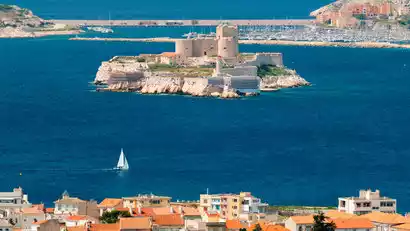
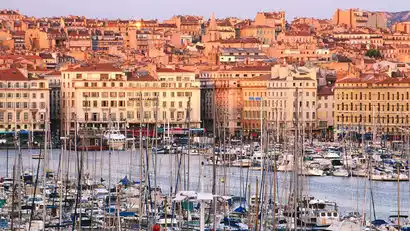
Day 12 Arrival in Shanghai
All day
Arrived at Shanghai Pudong Airport, the trip ends
Upon arrival, please hand your passport and boarding pass to your tour leader for submission to the consulate for visa cancellation. This process is expected to take 15 working days, so please allow time for your return trip. Depending on the consulate's requirements, some guests may be required to attend an interview for visa cancellation. Please cooperate with these arrangements.







